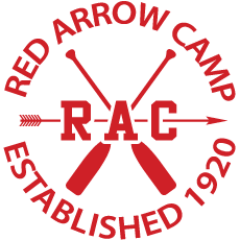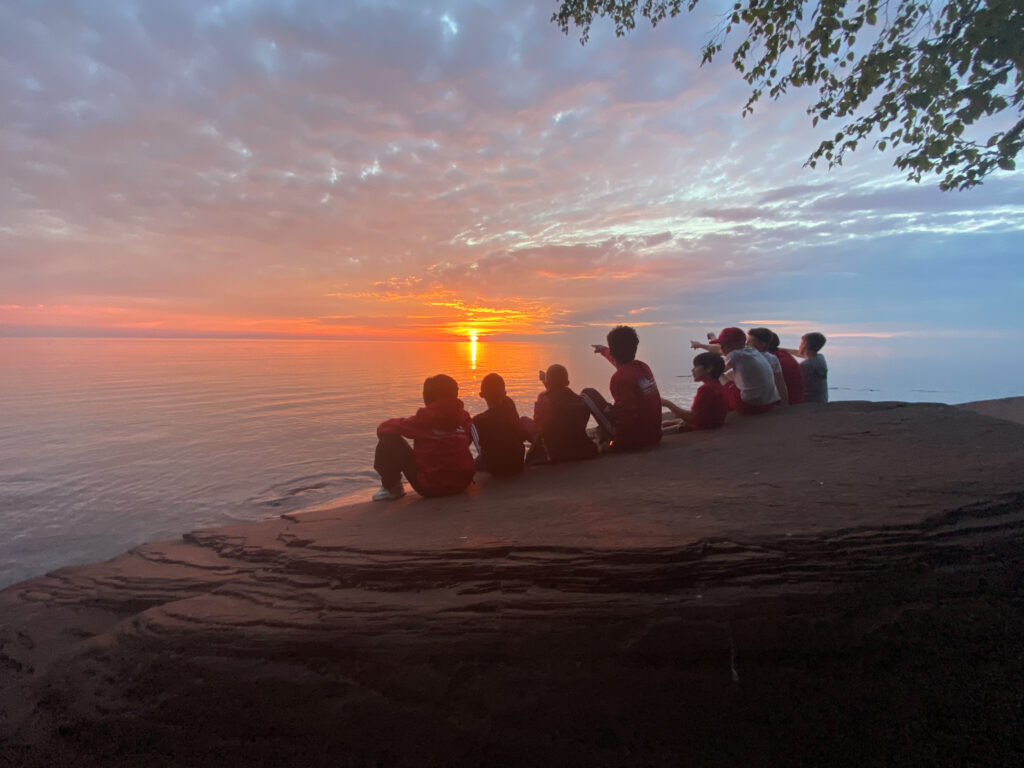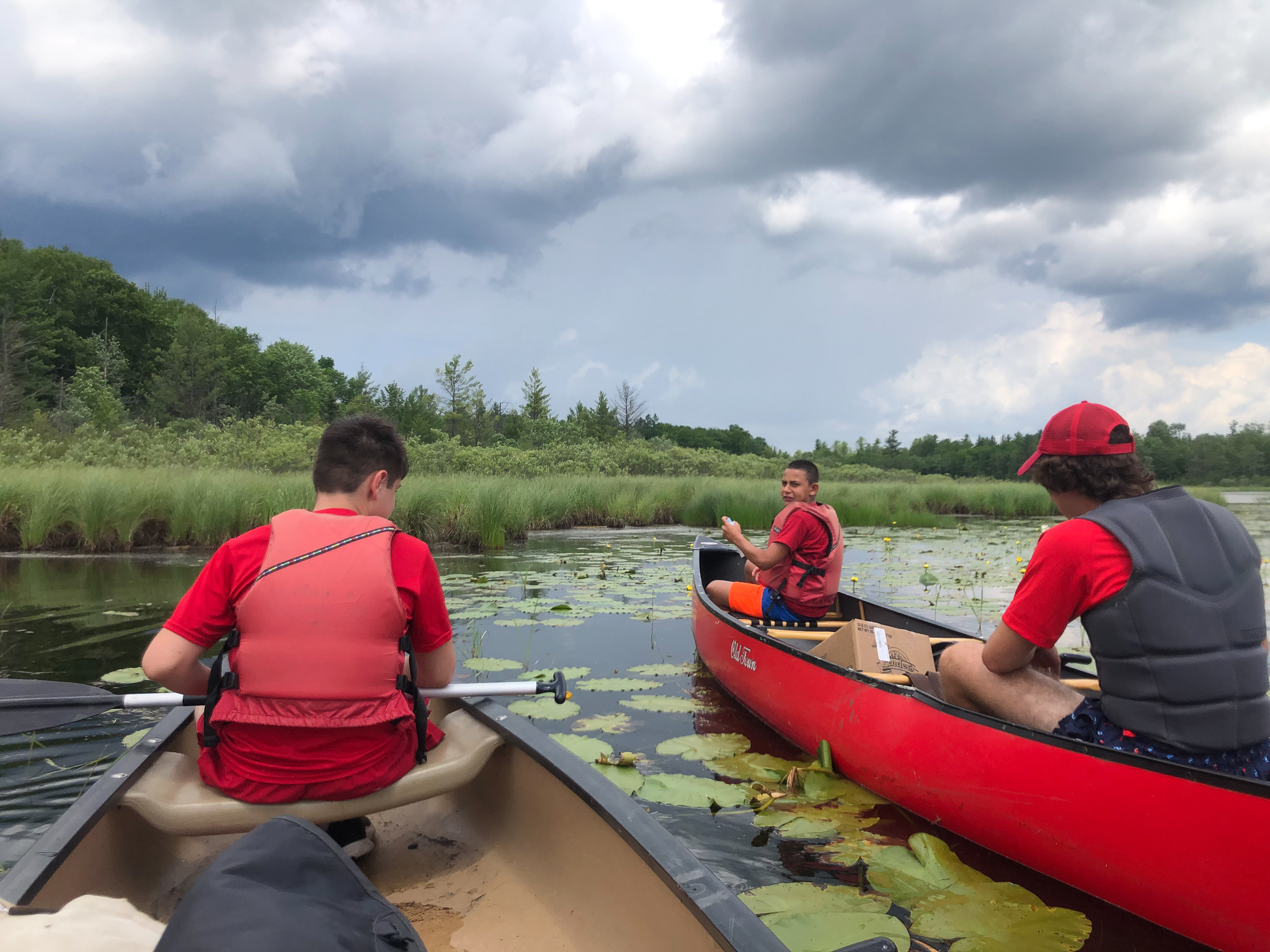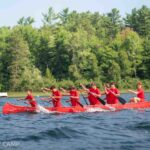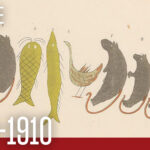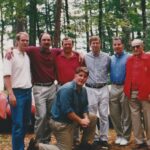One of the most important programs we have at Red Arrow is our tripping program. Every single boy in every cabin will embark on at least two wilderness trips. These trips are designed to submerse our campers into the beautiful and serene experience of the northwoods. There are two different types of trips we have here at camp. Every cabin must complete at least one canoeing trip. These canoe trips paddle through some of the finest rivers and lakes. The Flambeau flowage, Manitowish river, and the oldest cabin will embark on a ten day canoeing trip in the boundary waters. The other style of tripping at Red Arrow is hiking trips. We trek through the Porcupine Mountains, Pictured Rocks National Lakeshore, and for the boys in Chalet - the opportunity to hike on a seven day trip on the Isle Royale.
Every trip is a challenge and an adventure. They’re designed to present the boys with unique challenges that instill resilience, perseverance, and courage. This summer’s Tripping Director, Dave Johnson often refers to this poem written by Hamlin Garland when talking about the experience of tripping at camp:
“Do you fear the force of the wind, The slash of the rain? Go face them and fight them, Be savage again. Go hungry and cold like the wolf, Go wade like the crane: The palms of your hands will thicken, The skin of your cheek will tan, You’ll grow ragged and weary and swarthy, But you’ll walk like a man!”
The boys learn to come together through any inclement weather. When their legs sink in the mud, it’s not time to give up. When the skies darken with rainfall while canoeing, they still need to find a campsite and have dinner, they will push through any challenge mother nature will present, and when they get picked up, campers don’t leave the trip in tears; they often leave tougher, prouder, and accomplished in their crowning achievement. At Red Arrow, we follow through.
Many of the techniques and standards we have on our trips haven’t changed since the establishment of camp those many years ago. Our founder, Razz, believed in getting our campers away from all civilization as part of their development in becoming great men. Rollie Williams was our initial Tripping Director when camp was first established. After several summers, Dutch arrived at Red Arrow. Dutch took over the program for over 50 years. Dutch took careful notes about campsites, fishing logs, and weather for when the Counselors and staff repeated the routes. Dutch established the standard for Red Arrow trips to be orderly, organized, and respectful of their environment. To this day, we still use some equipment packs from the 1940s, and his standards have been maintained and built upon. This is all in an attempt to keep a true and traditional tripping experience for our Counselors and Campers alike.
This week, we had our first successful trips of the summer. Cabins D, E, F, and Castle went out at the start of the week, and Cabins C, Manor, Chalet, and Chateau just left for their first trips. The boys came back with a pack full of new memories and experiences and new friends in their cabins. The trails were wet from rain, and the river's waterline is higher than usual. This Sunday will be the first opportunity for these campers to earn their Best Tripper in these cabins.
Best Tripper is one of the three-character awards we offer at Red Arrow and an essential emblem to earn to qualify for Honor Camper - Red Arrow’s highest achievement for a camper. Many years ago, Dutch sat down to write out the qualifying factors that go into earning your Best Tripper on a trip. The standards are as followed -
Be cheerful and corporate with the other campers and counselors.
Be clean and keep his equipment neat and in order. Feet and shoes dry. Stay dry and warm.
Show appreciation of nature to the extent that you do not destroy ecology. Do not pollute or liter in any way.
Leave your campsite better than you found it so that no one would ever know you had been there.
Be able to help the counselors in wood-gathering, fire-building, helping prepare the meals and cleaning up after the meal, setting up tents and camp site-packing, and taking care of the equipment when leaving the campsite.
Use basic skills in canoeing and portaging.
Observe all basic Red Arrow Camp safety rules when swimming, wading a stream, shooting rapids, canoeing on lakes and streams, hiking through the woods, preventing sunburn, using any knives and axes.
The trip is not completed until all equipment is clean and dry and returned to the Trip Shack. The next group should be able to pick up their equipment and start their trip.
Older campers should be able to anticipate responsibility, setting up campers, gathering firewood, building a line box for fish and building a table with the use of canoe. Older campers should be abreast from themselves.
Dutch’s standards hold true throughout our history and beyond. We practice things like “Leaving no trace” and being the best version of ourselves at camp. Learning and mastering these standards as a camper at Red Arrow is essential to becoming your very best. Holding your own independence in the wilderness can build confidence and instill structure into a boy’s goals and aspirations. Tripping this summer is off to a great start, and we can’t wait to bring you more on the experiences and adventures that take place this summer.
Be cheerful and corporate with the other campers and counselors.
Be clean and keep his equipment neat and in order. Feet and shoes dry. Stay dry and warm.
Show appreciation of nature to the extent that you do not destroy ecology. Do not pollute or liter in any way.
Leave your campsite better than you found it so that no one would ever know you had been there.
Be able to help the counselors in wood-gathering, fire-building, helping prepare the meals and cleaning up after the meal, setting up tents and camp site-packing, and taking care of the equipment when leaving the campsite.
Use basic skills in canoeing and portaging.
Observe all basic Red Arrow Camp safety rules when swimming, wading a stream, shooting rapids, canoeing on lakes and streams, hiking through the woods, preventing sunburn, using any knives and axes.
The trip is not completed until all equipment is clean and dry and returned to the Trip Shack. The next group should be able to pick up their equipment and start their trip.
Older campers should be able to anticipate responsibility, setting up campers, gathering firewood, building a line box for fish and building a table with the use of canoe. Older campers should be abreast from themselves.
